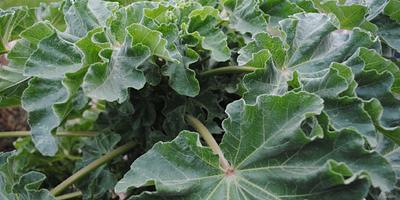
Invasive Non-Native Species
For many years, plants or animals have been brought to our shores by people through a range of different pathways, such as the movement of boats, equipment, goods or stock. These movements arise from both international trade and recreational and leisure activities. Where these species have a negative impact on our native wildlife or people’s well-being or the economy they are termed invasive. It is important to have protocols in place to detect and then respond to invasive species in our coastal and marine environments. The best line of defence is to try to prevent these invasive non-natives arriving in the first place by having appropriate biosecurity measures in place.
Examples of non-native invasive species around the UK include:
- Wireweed (Sargassum muticum) – an olive-brown seaweed, with tough wiry stem, that is over 1m in length and found in shallow areas and rock pools. Native to the north-western Pacific shores it was unintentionally introduced with commercial oysters to other countries and has spread from there by natural dispersal or fouling on boats. It can outcompete native species, be a nuisance to people enjoying recreational activities such as swimming and kayaking and can foul fishing gear.
- Carpet sea squirt (Didendum vexillum) – is a marine invertebrate which is capable of forming large colonies. Originally from the North west Pacific it is most likely to have been introduced to other areas by attaching to the hulls of boats or through the movements of stock for aquaculture. It can cover and significantly alter the species composition of sediment layers, can overgrow mussel beds, and foul aquaculture gear.
- Slipper limpet (Crepidula fornicata) – is a limpet about 5cm in length which is often found in stacks or chains which are made of several individuals. This species is native to Canada and the Eastern coast of America and is most likely to have been imported with American oysters. It can outcompete native species by reducing the amount of hard surfaces they have available to attach to and can have an economic impact on fisheries and mariculture when heavily infested, fouled shells have to be cleaned.
- Tree mallow (Malva aborea) is a coastal plant which can become invasive on seabird islands. Native to the South of England, the coasts of western Europe and the Mediterranean region, it is thought to have been introduced to the Bass Rock over 300 years ago because of its medicinal value. It spread rapidly, taking over other islands and preventing the puffins from nesting. Find out more about how we are tackling this threat here.
Organisations such as Biosecurity for LIFE are working to raise awareness of the threat of invasive predators, such as rats, mink, stoats and feral cats which can be devastating for island seabird populations. Their aim is to put in place systems to prevent their accidental introduction to islands.
